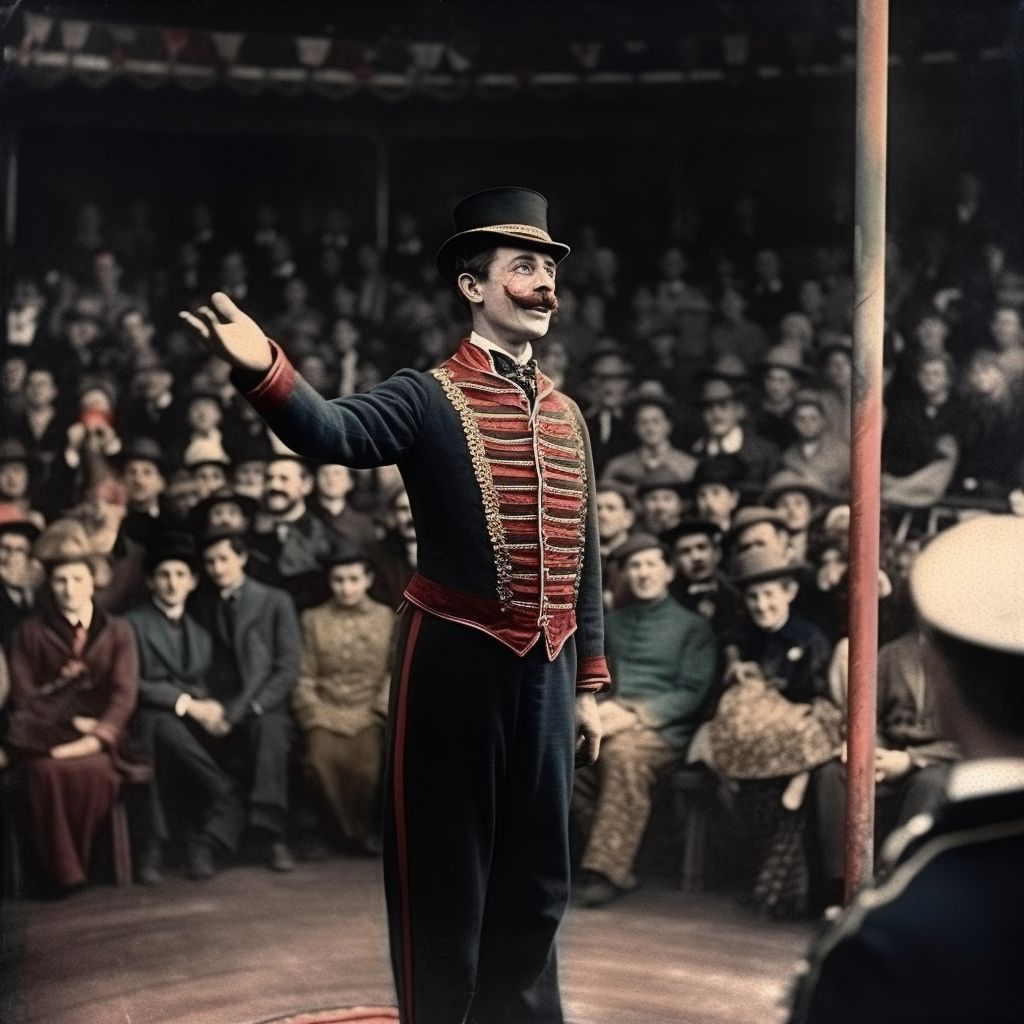Ringmaster
The ringmaster profession has long been an essential component of the American circus, captivating audiences with a unique blend of showmanship, organization, and storytelling. As the master of ceremonies, ringmasters play a crucial role in orchestrating the many acts and performances that bring the circus to life. In the 1880s, the arrival of auto sapient automatons began to transform the world of circus entertainment, reshaping the role of the ringmaster and offering new opportunities for innovation and spectacle.
The Role of Ringmasters
As the central figure of the circus, the ringmaster is responsible for guiding the audience through the various acts and performances, using their charisma and command of the stage to ensure a seamless and entertaining experience. The ringmaster must possess a deep understanding of the circus world, as well as exceptional communication skills and a flair for the dramatic.
In addition to their on-stage duties, ringmasters often play a pivotal role in managing the day-to-day operations of the circus. This can include overseeing the training and care of performers, coordinating with other circus staff, and ensuring that all aspects of the show run smoothly.
The Impact of Automatons
The introduction of auto sapient automatons in the 1870s brought about significant changes for the circus industry, particularly in terms of setting up and dismantling the elaborate structures required for a traveling show. Circuses that could afford these advanced machines began employing them for tasks such as erecting tents, constructing seating areas, and assembling performance equipment.
While Auto Sapients were not used as performers, their contributions to the logistical aspects of the circus allowed ringmasters and their teams to focus on creating a more spectacular and memorable experience for their audiences. The use of automatons also provided an added layer of safety, as their precision and strength minimized the risk of accidents during setup and teardown. However, Human workers were still necessary to double-check the work completed by the automatons, ensuring that everything was secure and safe for both performers and spectators.
Challenges and Opportunities
The integration of auto sapient automatons into circus operations presented both challenges and opportunities for ringmasters. On one hand, the reliance on these machines raised concerns about the potential loss of traditional skills and the impact on human labor within the circus world. Some also feared that the novelty of automatons could overshadow the performances and acts that had long been the heart of the circus experience.
On the other hand, the introduction of auto sapients offered ringmasters the chance to explore new possibilities in circus entertainment, pushing the boundaries of what could be achieved on stage. With automatons handling much of the heavy lifting, ringmasters could devote more time and resources to refining their acts and developing innovative, awe-inspiring performances that would captivate audiences and redefine the circus experience.
Conclusion
In 1880, the ringmaster profession stood at the crossroads of tradition and innovation, as the arrival of auto sapient automatons transformed the world of circus entertainment. By embracing the opportunities presented by this new technology, ringmasters found themselves poised to usher in a new era of circus spectacle and wonder, all while preserving the timeless allure and magic of the circus ring.
Type
Entertainment

